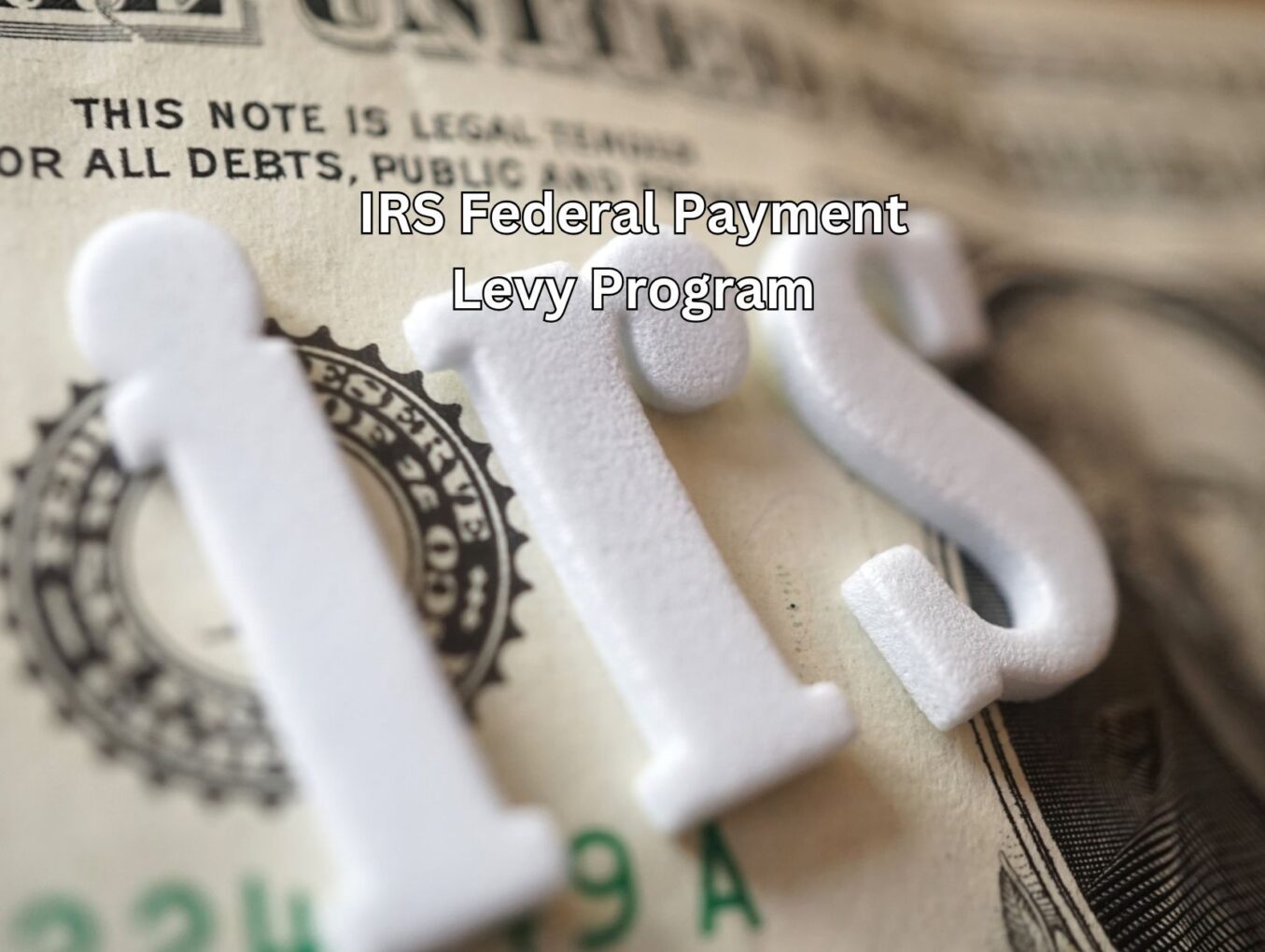What Is the IRS Federal Payment Levy Program (FPLP)?
The IRS collects unpaid taxes with the FPLP by levying federal payments to taxpayers with debt. FPLP allows the IRS to legally bypass the courts and seize federal payments immediately.
This levy program targets taxpayers who owe back taxes and have not contacted the IRS to make payment arrangements.
More specifically, Internal Revenue Code Section 6331 (h) authorizes using the Federal Payment Levy Program to transfer delinquent accounts to the Bureau of the Fiscal Service (BFS).
BFS then scans its database for a match with a taxpayer receiving federal payments. As soon as BFS finds a match a federal payment levy begins automatically.
Which Federal Payments are Subject to the FPLP?
The current list of federal payments that the IRS can levy through the FPLP includes:
- Some federal wages and Social Security benefits
- Federal employee retirement annuities
- Federal employee travel reimbursements or advances
- Federal payments made to taxpayers as vendors or contractors doing business with the U.S. government, including defense contracts
- Medicare supplier and provider payments
- Military retirement
- Railroad retirement board benefits
The IRS also states that this list will eventually expand to include other categories of federal payments and employees as it plans to collect even more tax debt.
Are Any Payments Exempt from FPLP Levies?
While the FPLP targets a broad range of federal payments, certain payments are exempt to protect income necessary for basic living expenses.
Exemptions include Supplemental Security Income (SSI), some veterans’ benefits, and disaster relief payments. Federal wages may also be exempt based on a taxpayer’s filing status and dependents.
In certain hardship instances, some additional federal payments to delinquent taxpayers will also be excluded from the program.
Taxpayers in bankruptcy, applying for relief as an innocent or injured spouse, or making alternative payment arrangements may be exempt from the FPLP.
Can the FPLP Levy Wages, Pensions, Social Security, and Other Federal Payments at the Same Time?
The FPLP can levy multiple federal payments concurrently, but the IRS limits how much it can collect. The amount collected is typically limited to 15% of certain regular payments.
However, if a taxpayer receives multiple federal payments, the levies authorized by the FPLP cannot exceed the maximum percentage allowed from all sources.
What Is the Maximum Amount the IRS Can Take From Your Federal Payments Through the FPLP?
The maximum amount the IRS can take from recurring federal payments, such as Social Security benefits (excluding SSI) or federal salaries, through the FPLP is 15%.
However, this percentage varies depending on the payment type and a taxpayer’s specific circumstances. For one-time payments, such as tax refunds, the IRS can seize the entire amount to offset taxes owed.
They can also levy up to 100% of federal vendor payments, travel advances, or reimbursements.
What Steps Can You Take to Stop or Reduce a Federal Payment Levy?
The best way to stop federal payment levies through the FPLP is to address the tax debt immediately.
Filing delinquent tax returns, entering into an installment agreement, submitting an Offer in Compromise, or contacting the IRS to explore other tax relief options will likely prevent a federal payment levy.
Demonstrating financial hardship with Form 433 may also reduce or stop a levy.
How Long Does an FPLP Levy Last?
An FPLP levy continues until the tax debt is paid in full or a payment arrangement is established.
In some cases of financial or personal hardship, the Bureau of the Fiscal Service may temporarily or permanently release the FPLP. Only the BFS can release FPLP levies.
IRS collection agents working with taxpayers to resolve tax liabilities cannot guarantee that the FPLP will not seize federal payments.
The program operates as an entity separate from the IRS collection system. Taxpayers actively seeking to resolve their tax debts should request verification of holds on all types of collection actions, including the FPLP.
How Does the FPLP Affect Other IRS Collection Actions, Such as Tax Liens, Wage Garnishments, and Bank Levies?
The FPLP is sometimes combined with other IRS collection methods. While the FPLP can seize federal payments before they reach the intended individual, the IRS can also file a tax lien on a delinquent taxpayer’s property.
If the FPLP cannot settle the amount, the IRS may also garnish wages or levy bank accounts to collect the remaining funds needed to pay off all unpaid taxes.
Need more help? You can start online by answering 6 simple questions.
6 Simple Questions. Free Evaluation.

